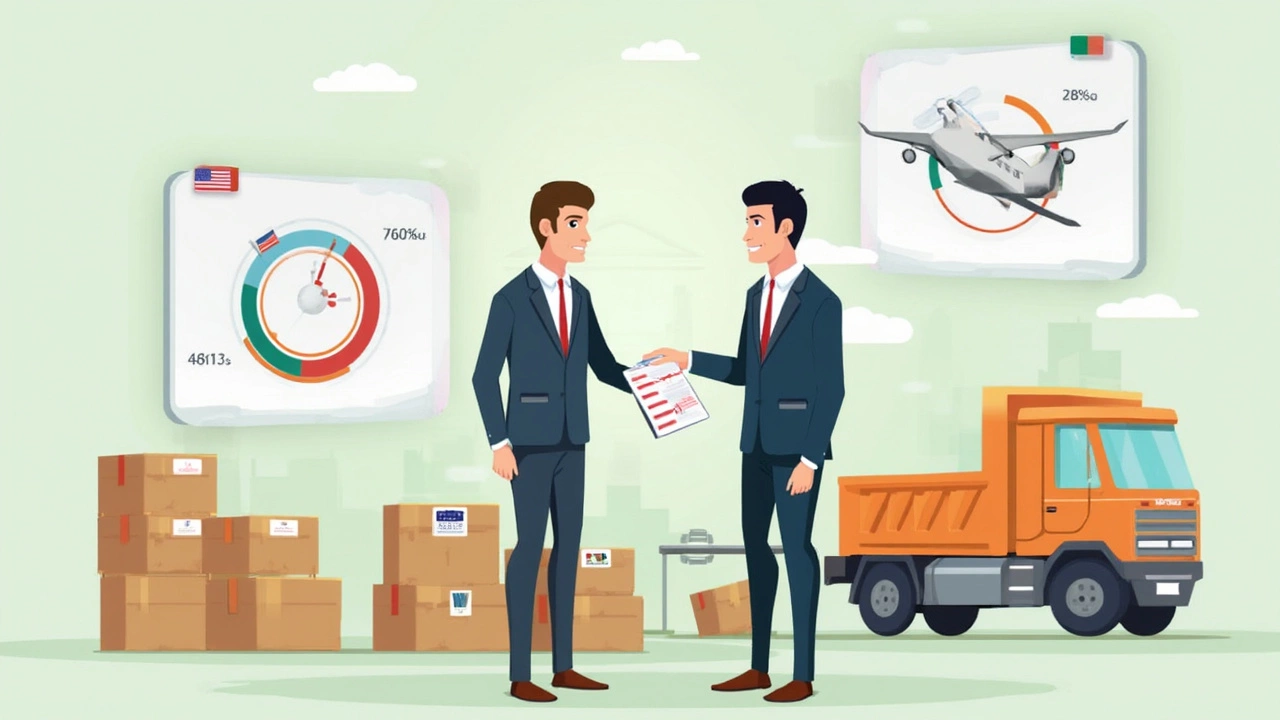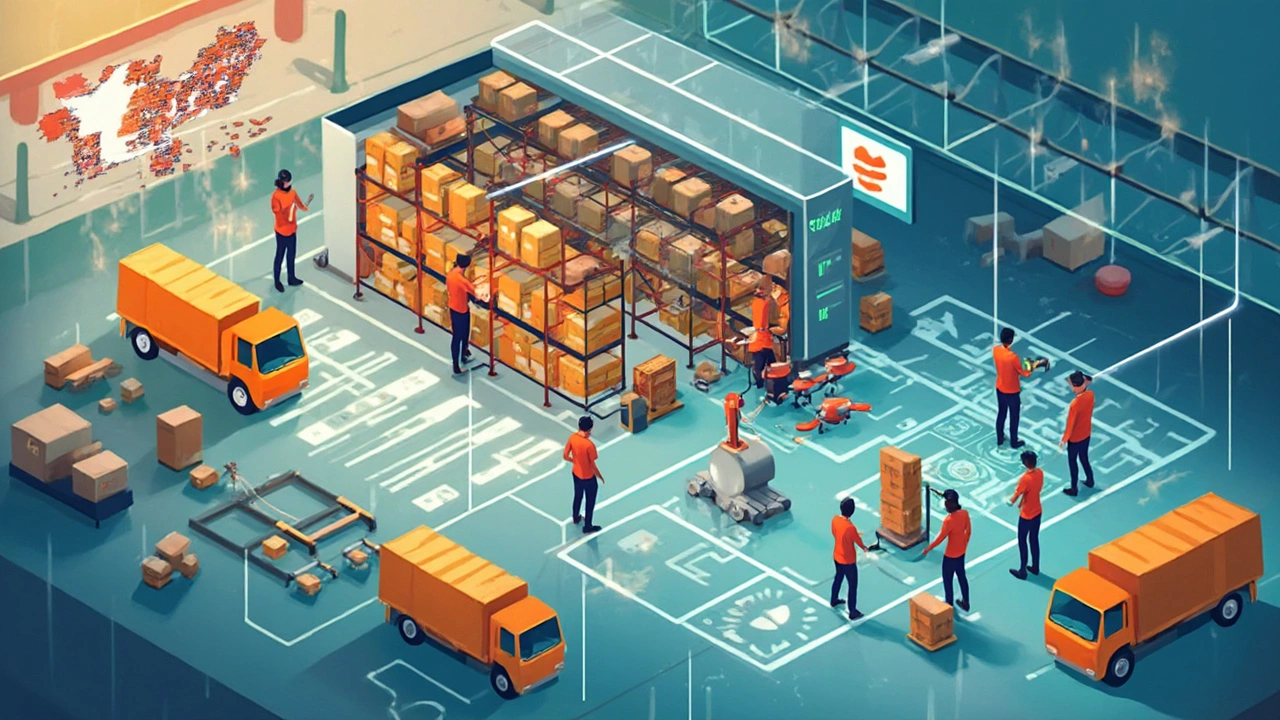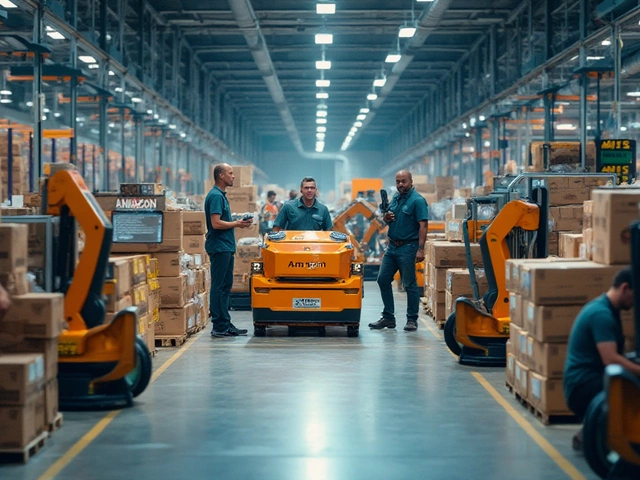Everyone talks about FedEx and UPS, but who actually wears the crown as the biggest logistics company in the US? That’s not just bar trivia—it matters if you’re shipping goods, picking a tech partner, or just trying to wrap your head around this huge industry. The numbers can be jaw-dropping. UPS, for example, clears over $90 billion in revenue a year just in the US. FedEx trails close. That’s a lot of packages zooming around.
But here’s the thing—size isn’t just about trucks and warehouses. These companies run on top-tier software. Without smart logistics platforms, even the most massive fleet gets stuck in gridlock. Ever gotten a real-time package update? Thank logistics software. Ever watched your shipments make wild detours across the country—and still arrive on time? That’s algorithms and live data at work.
So, if you think of logistics as just forklifts and brown boxes, it’s time to look under the hood. Let’s see what really makes the biggest US logistics companies tick—and how their tech might help (or trip up) your own supply chain.
- The Goliaths of US Logistics
- What Makes a Company 'The Biggest'?
- Inside Their Tech: Logistics Software Powerhouses
- How It Impacts Your Business
- Tips for Choosing the Right Logistics Partner
The Goliaths of US Logistics
If you’re trying to figure out who’s at the top of the logistics food chain in the US, you can’t ignore UPS and FedEx. These giants aren’t just the biggest by shipping volume—they dominate almost every part of the supply chain, from air to ground to software tracking and more.
UPS stands out as the true heavyweight. In 2024, their revenue just in the United States was north of $90 billion. On a typical day, they handle around 24 million packages globally. That volume puts them at the absolute top when you’re talking about the biggest logistics company in the US. FedEx is right behind them. Their US revenue is close—about $55 billion in the latest fiscal year. Both companies employ hundreds of thousands just in the US, with massive ground fleets and plenty of planes too.
| Company | US Revenue (2024) | Employees (US) | Daily Packages (Global) |
|---|---|---|---|
| UPS | $90B+ | 370,000+ | 24M+ |
| FedEx | $55B | 370,000+ | 16.5M |
But here’s something most people miss: companies like Amazon Logistics are quickly sliding into the spotlight too. Amazon now hands out over a third of its own US deliveries, running its own network that sometimes even partners with other carriers. In just a few years, its delivery van fleet and air hubs have exploded. If growth continues at this pace, Amazon could be giving UPS and FedEx some real competition soon.
It’s not just about size either. These goliaths are leaders in logistics software and automation. Their platforms process mind-boggling shipments and data non-stop. So when you ship with these companies, you’re not just paying for trucks—you’re getting access to some of the smartest technology in the game.
What Makes a Company 'The Biggest'?
When you hear someone claim their company is the biggest logistics company in the US, what does that even mean? Are we talking about revenue, packages delivered, sheer number of employees, or something else entirely? The truth is, it’s a mix of a few metrics—and the winner depends on what you pick.
The most common way to measure “biggest” is by annual revenue. If you look at just the money coming in, UPS takes the top spot in the US, with FedEx nipping right at its heels. These two giants move billions of parcels every year. But headcount, fleet size, and even square footage of warehouses also get thrown into the mix, especially if you’re a supply chain nerd looking for the deepest answer.
| Company | 2024 US Revenue | Annual Shipments | Employees (US) |
|---|---|---|---|
| UPS | $91 Billion | 5.2 Billion | 400,000+ |
| FedEx | $77 Billion | 3.1 Billion | 370,000+ |
But here’s a twist: size in logistics isn’t just bragging rights. Bigger companies can negotiate better shipping rates, invest in high-end logistics software, and handle surprise surges—like those crazy holiday seasons—way better. That scale matters if you rely on them to get your stuff across the country. On the flip side, smaller companies might offer more personal service or niche expertise, but they just can’t match the reach and muscle of the big dogs.
Picking the “biggest” isn’t simple math—it’s about what qualities matter for your business. If you care about speed, tracking, and nationwide networks, the revenue giants like UPS and FedEx will usually be your go-to.

Inside Their Tech: Logistics Software Powerhouses
Behind every mega delivery, there’s some seriously smart logistics software calling the shots. When people think of the biggest logistics company in the US—be it UPS or FedEx—it’s all about their tech muscle. UPS, for instance, uses a routing system called ORION (On-Road Integrated Optimization and Navigation), which cranks through millions of routes each day for its drivers. That’s not an exaggeration—ORION makes more than 100,000 drivers more efficient. The company claims this software shaves off up to 10 miles per route, saving about $400 million a year in fuel and time. Not bad for pressing a few buttons.
FedEx isn’t napping either. It's got its own set of digital tricks, relying on proprietary tech for package sorting, tracking, and even flight scheduling. Their SenseAware platform gives real-time tracking and environmental data for more sensitive shipments, so you can tell if a package got too hot or took a sharp knock along the way.
So where's the magic? These logistics software platforms let companies crunch crazy amounts of data at lightspeed. Here’s a breakdown of what the tech actually does:
- Dynamic Routing: Reroutes drivers and shipments instantly—no calling dispatch, no driver guessing. More efficient, less wasted fuel.
- Automated Sorting: Robots and conveyor belts zip packages to the right bins in seconds, guided by live scanning and AI.
- Predictive Analytics: Algorithms figure out bottlenecks and help plan schedules, so that even spikes like Cyber Monday don’t throw them off track.
- Customer Tracking: Real-time status updates and push notifications for end-users—because everyone wants to know where their stuff is.
- Inventory Integration: Syncs with warehouse management systems, so companies never lose track of what's actually on hand.
Want some numbers? Have a look at just how much data these giants process each day:
| Company | Daily Packages Handled | Estimated Software Transactions per Day |
|---|---|---|
| UPS | 24 million | 1+ billion |
| FedEx | 14.5 million | 800 million+ |
Bottom line: being the biggest logistics company in the US isn’t just about trucks; it’s about having the smartest, fastest software working behind the scenes. If you’re sizing up a logistics partner, get curious about their tech stack—because a weak system can slow down your supply chain, no matter how many warehouses they own.
How It Impacts Your Business
Teaming up with the biggest logistics company in the US can change the game for your business. We're talking about speed, reach, and tracking power that smaller outfits just can't match. When you ship with a giant like UPS or FedEx, your packages ride on their massive networks. That means faster shipping to more places, from big cities to remote towns. As of 2025, UPS covers 95% of US zip codes with next-day or two-day delivery. That's not hype—just real reach.
The other huge win is tech. These guys have invested billions in logistics software and tracking tools. Want to know exactly where your shipment is? You get real-time updates, customizable alerts, auto-generated tracking numbers, and instant proof of delivery. For customer support, systems flag delays before you even call. That's a lifesaver if you sell online and want to keep buyers happy.
Cost is a big factor too. Sure, major logistics companies might charge higher rates compared to someone local, but bulk shipping discounts and software integrations can save you money as your volume grows. Plus, their software automates a lot—like label printing, inventory updates, and even customs forms for international packages—so you save on labor and headaches.
On the flip side, you might notice less flexibility. Giants aren’t always nimble. If you need a special delivery window or custom handling, smaller companies could do that better. But for standardized, high-volume shipping, the biggest players are usually more efficient.
Here’s a quick side-by-side look at what big logistics companies bring to the table versus smaller competitors:
| Feature | Biggest US Logistics Companies | Smaller Players |
|---|---|---|
| Coverage | Nationwide, global | Usually limited, regional |
| Delivery Speed | High, next-day/two-day | Variable, slower |
| Tracking/Software | Advanced, automated | Basic or manual |
| Flexibility | Lower, rigid schedules | Higher, custom options |
| Bulk Discount | Available, significant | Limited |
Bottom line: If you want strong tracking, big coverage, and time-saving software, sticking with the biggest logistics company in the US pays off. But if you have odd-sized goods or tricky delivery needs, weigh your options. Let the tech and scale work for you—but don’t forget to check if their strengths actually match what your business needs.

Tips for Choosing the Right Logistics Partner
Picking the right logistics company can make or break your shipping experience. With giants like UPS and FedEx setting the pace—think about this: UPS moves roughly 24 million packages per day! It’s easy to get lost in the hype, but the real trick is finding the one that fits your business, not just the biggest name out there.
Here’s what you should really focus on when making your choice:
- Tech & Software: Does their logistics software talk to your systems? Real-time tracking, inventory sync, and automated alerts can make your life easier and cut down the chaos when things go wrong.
- Service Area & Network: Some companies rule the big cities, others shine in rural areas. Check their reach if you’re shipping coast to coast or to harder-to-reach ZIP codes.
- Reliability & Speed: Two-day shipping has become the gold standard. Want proof? Amazon Prime forced even the biggest names to step up their game. Dig into on-time delivery rates—a strong number here means fewer headaches for you.
- Pricing: Big doesn’t always mean cheap. Some logistics companies offer volume discounts or better rates for certain zones or package types. Ask for transparent quotes and compare apples to apples.
- Customer Support: When a delivery goes off the rails, you want a human who picks up the phone. Seek out companies with responsive support, not just a chatbot or endless phone menus.
- Flexibility: Maybe your orders spike during certain months, or you need cold storage for some items. The right logistics partner should flex with your needs, not force you to play by their rules.
You’d be surprised—more than 70% of midsize US businesses said supply chain visibility is their top pain point, according to a 2024 Logistics Tech Survey. So if a company’s tech feels like a black box, that’s a red flag.
| Key Feature | FedEx | UPS |
|---|---|---|
| Real-Time Tracking | Yes, advanced | Yes, leading-edge |
| Custom Integration | Good for large clients | Strong, even for midsize firms |
| On-Time Rate | ~97% | ~98% |
| Customer Support | 24/7 live help | 24/7 live help |
The bottom line: look past the big logos. Test out their software, talk to their reps, and read real-world reviews. The best logistics software isn’t always the flashiest, but it should work for your business—not the other way around.





